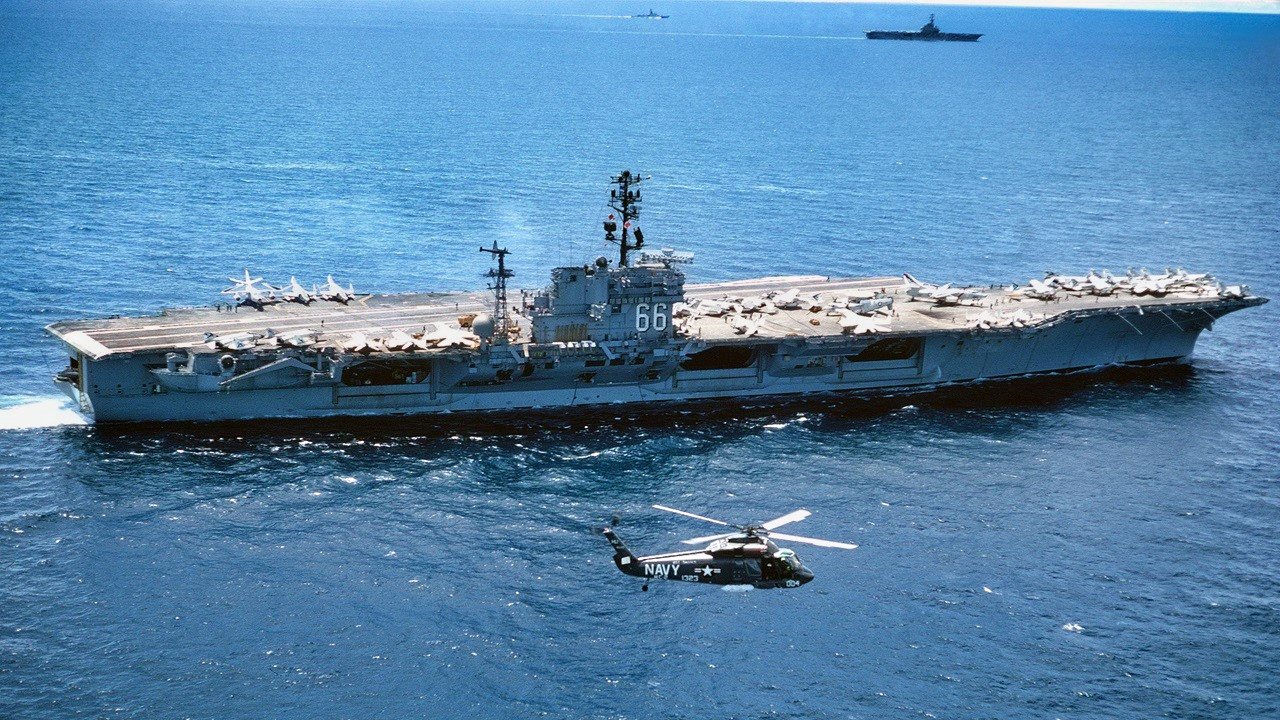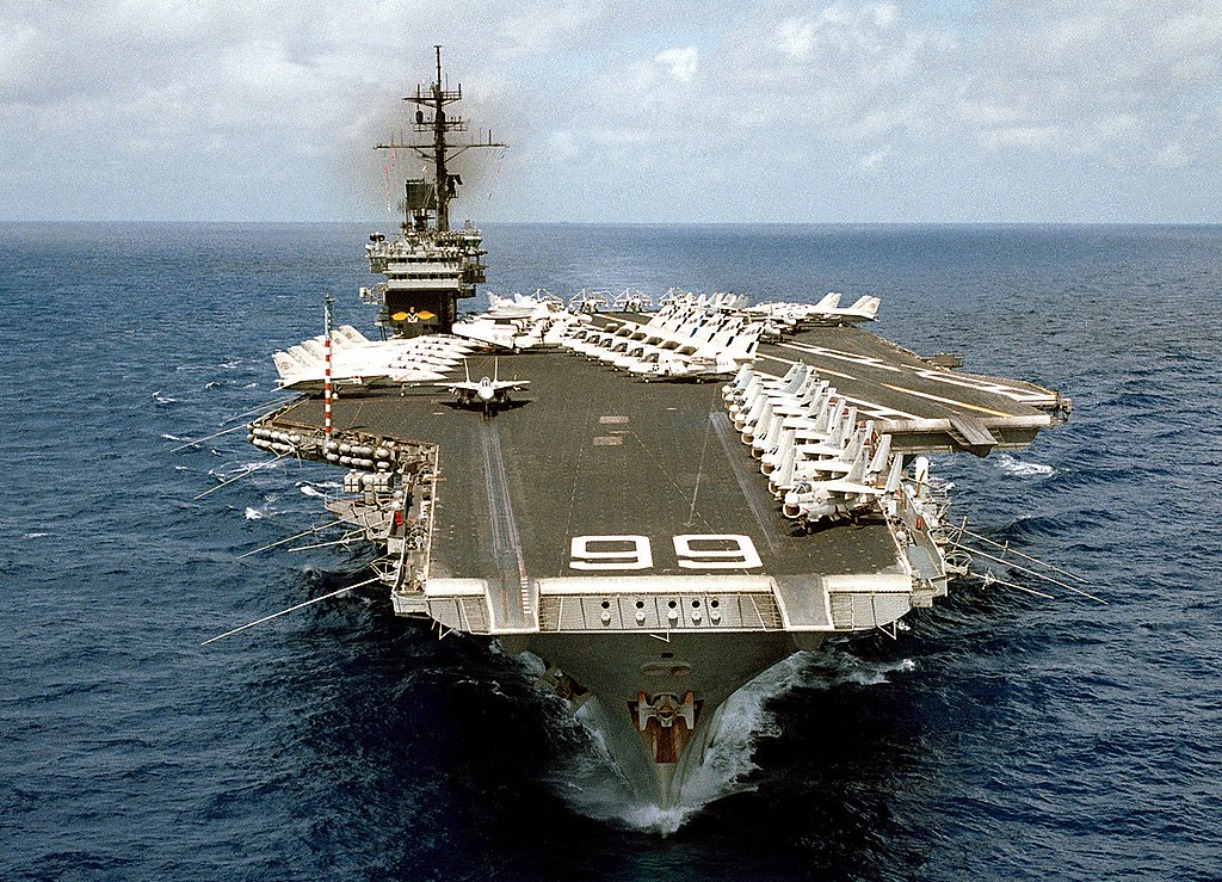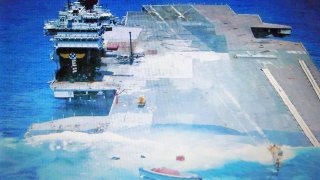USS America: The Navy Couldn't Sink This Remarkable Aircraft Carrier
The US Navy purposefully sank the USS America aircraft carrier at 11:30 am on May 14, 2005. After slipping beneath the waves, America sank for three miles before landing upon the floor of the Atlantic, in one piece, where she still rests.
The US Navy purposefully sank the USS America aircraft carrier at 11:30 am on May 14, 2005. After slipping beneath the waves, America sank for three miles before landing upon the floor of the Atlantic, in one piece, where she still rests.
Condemning the America to an intentional sinking may have been difficult for veterans who served upon the vessel. But the America’s veterans can take pride in the valuable data gleaned from the scuttling, as the America was sank to better understand how carriers respond to enemy attacks.
So, hopefully, the America’s sinking will save US vessels from unintentional sinkings in the future.
Aircraft Carrier USS America: A Cold War Relic
The America, known as CV-66, was one of the three Kitty Hawk-class aircraft carriers that were built in the 1960s. The Kitty Hawk was considered something of a transitional model, an incremental improvement over the preceding Forrestal-class, but not quite the marvel that would become the Nimitz-class. Commissioned in 1965, the America was nicknamed “The Big A,” and remained in service until 1996.
Initially, America was meant to feature a nuclear power plant (like all of the US’s contemporary aircraft carriers). But, on account of rising costs, the America’s builders pulled an audible, mid-construction: the America would instead feature the conventional power of four steam turbines, good for 280,000 horsepower.
Once completed, the America measured 1,048 feet long with a 248-beam. The Big A could reach 34 knots and required over 4,600 sailors to operate the ship and her 80-ish aircraft.
USS America in service
The America spent most of her service life deployed in the Atlantic and the Mediterranean. The exception was during the Vietnam War, when the America was deployed to the Pacific three separate times. In all, America had an exciting and purposeful service life; she either supported or participated directly in multiple twentieth-century conflicts, including the Six-Day War, the Vietnam War, Operation El Dorado Canyon, and Operation Desert Storm. By Desert Storm, and the 1990s – Bill Clinton, OJ Simpson, the Dallas Cowboys, grunge music – America and the Kitty Hawk-class had grown out of date.
The steam turbines were especially out of date; nuclear power had long since become the standard power plant of US aircraft carriers. Still, the US Navy determined America had some more life left, and she was scheduled to undergo a Service Life Extension Program (SLEP), meant to push her service life out until 2010. However, attitudes were changing. The Cold War was over. The US was no longer perpetually on guard from a near-peer rival.

Instead, the US enjoyed a moment of unipolarity, where no nation on Earth came close to possessing either the hard or soft power that the US projected. Military spending, which had been so cavalier throughout the Cold War, was reigned in. Budgets were cut. Priorities were established. And extending the life of an already three decade old steam powered aircraft carrier was not a priority in the newly constrained economic environment.
America was decommissioned in a ceremony at Norfolk Naval Shipyard in 1996, and then transferred to the Inactive Ship Maintenance Facility in Philadelphia, Pennsylvania.

But, despite being decommissioned, the US Navy would still find the America uniquely useful.
A Purposeful Ending for this Aircraft Carrier
Originally, after being decommissioned, the America was to be scrapped for parts. But that didn’t happen.
Rather, the US Navy elected the America for a live-fire test – a test designed to sink the venerable ship. Veteran sailors of the America were dismayed, protesting that the Navy could not sink a vessel named after the USA. Make the ship a museum, the veterans argued. Yet the Navy stood fast in their decision.
Admiral John B. Nathman, then the Vice Chief of Naval Operations, penned a letter to the America’s veterans, to explain why the boat had been selected for a live-fire test:
“America will make one final and vital contribution to our national defense, this time as a live-fire test and evaluation platform. America’s legacy will serve as a footprint in the design of future carriers – ships that will protect the sons, daughters, grandchildren, and great grandchildren of America veterans. We will conduct a variety of comprehensive tests above and below the waterline collecting data for use by naval architects and engineers in creating the nation’s future carrier fleet. It is essential we make those ships as highly survivable as possible. When that mission is complete, the America will slip quietly beneath the sea. I know the America has a very special place in you hearts, not only for the name, but also for your service aboard her. I ask that you understand why we selected this ship for this one last crucial mission and make note of the critical nature of her final service.”
And so it was.
Although, the Navy failed to sink the America as planned. The stubborn carrier wouldn’t go down, causing the Navy to have to scuttle the ship from aboard.

When America finally sank, a moment of silence was held, commemorating her service life and her myriad contributions.
About the Author: Harrison Kass
Harrison Kass is a prolific defense writer with over 1,000 articles published. An attorney, pilot, guitarist, and minor pro hockey player, he joined the US Air Force as a Pilot Trainee but was medically discharged. Harrison has degrees from Lake Forest College, the University of Oregon, and New York University. He lives in Oregon and listens to Dokken.
All images are Creative Commons.


